Category: Blog
If you had asked me a couple of weeks ago I might have said "Rhododendrons? Love em; beautiful burgundy reds and creams; rich green perennial foliage in the gardens of stately homes; what is there to not like about them?"
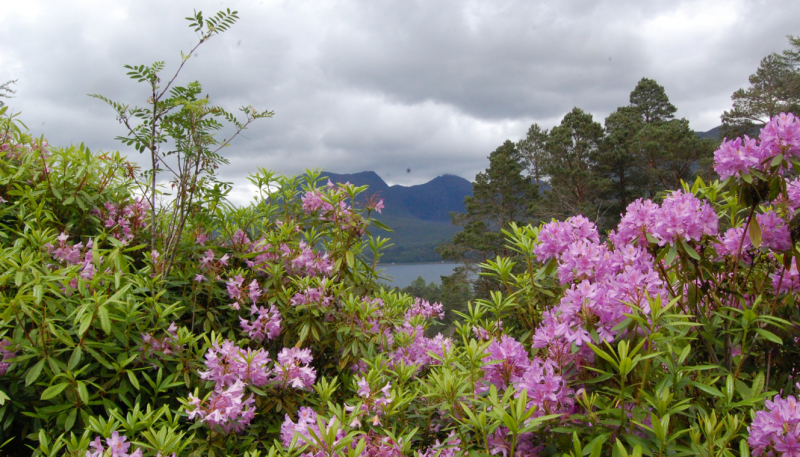
Well a few days out at Torridon, clearing rhododendrons that were spreading like a nasty green blanket suffocating the forest floor, taught me that there is a LOT to dislike about the rampant infestation of this alien species.
Rhododendron ponticum is a non-indigenous evergreen shrub. It was introduced into the British Isles around 1763 as a cultivated flowering plant and was widely planted in gardens, parks and estates. It was also planted extensively in Victorian hunting estates, particularly in western coastal areas, under woodland canopies and on heathland areas to provide shelter for game species. It was later used as a rootstock for less hardy scions of rhododendron species and cultivars, but the original rhododendron rootstock often produced its own shoots, which out-competed and then replaced the species or cultivar and reverted back to wild type rhododendron.
This is the purple cross-bred variety that is so very vigorous and now I see it almost everywhere I look.
The eradication of such a rampant exotic is, not surprisingly, very difficult. Pulling out young bushes is effective, but cutting back established bushes repeatedly is a dispiriting venture as they sprout with renewed vigour. Flailing with tractor Rotavator-like attachment is effective but with the same sprouting limitation – and of course with the difficulty of tractor access in woodland.
In Torridon's Ben Damph estate they had used the amazingly effective method of drilling the base of each bush repeatedly and injecting glyphosate systemic weed-killer. I never thought I would write that line about Roundup brush killer, which is receiving so much controversial attention!
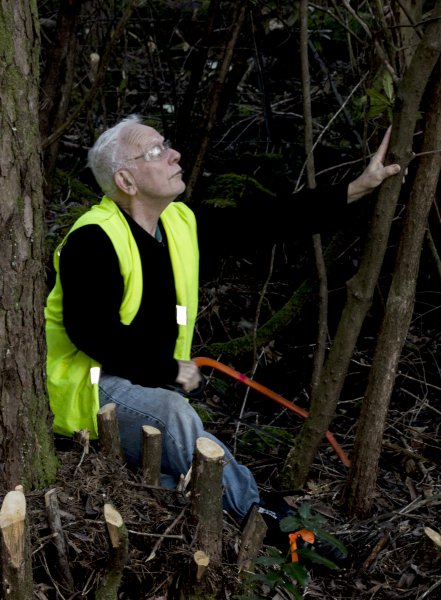
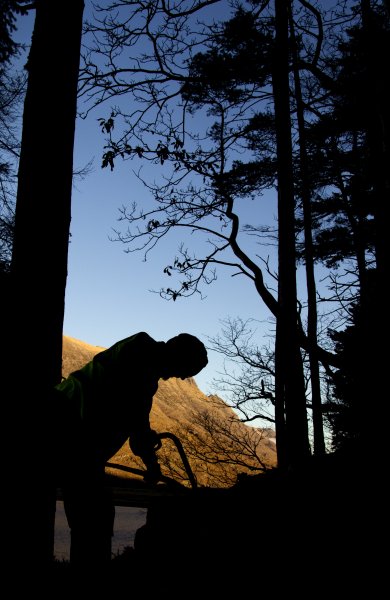
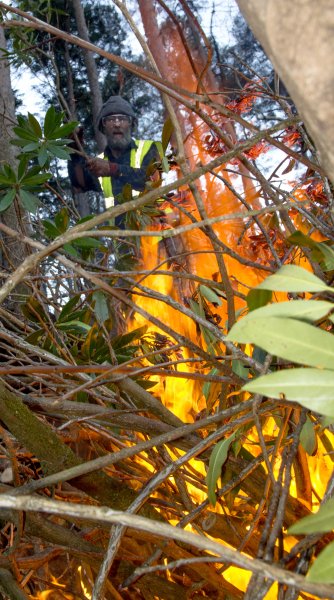
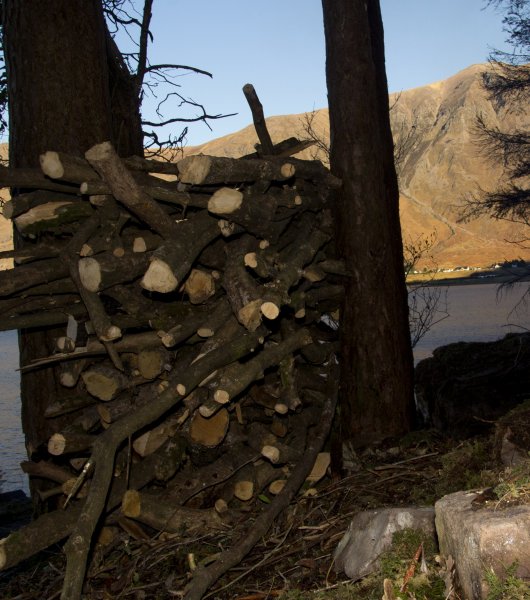
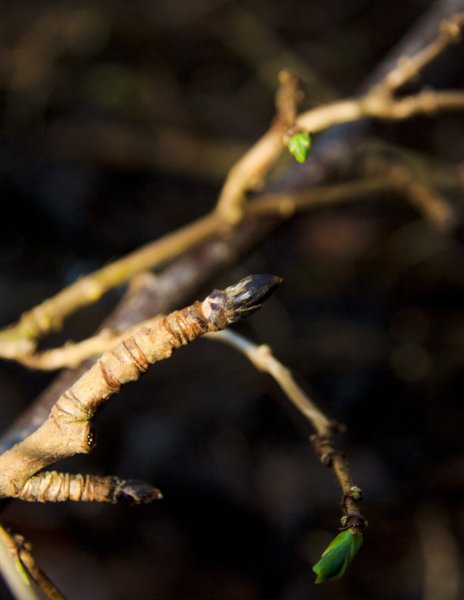
​previously hostile, light deprived territory
Clearing invasive rhododendrons was very satisfying and something I would love to do again and the last picture above tells its own story -isn't that the most beautiful and optimistic image, capturing the essence of the regeneration of the Caledonian Forest!
Since returning home to Forres and walking in Muiry Woods I see rhododendrons around every tree. Marching as they do across the woodland floor and smothering everything in their path.
I am moved to see if together we cannot mount a project with the Forestry Commission (or whoever?) to liberate our community woods from this invasive threat as they have in Ben Damph.
